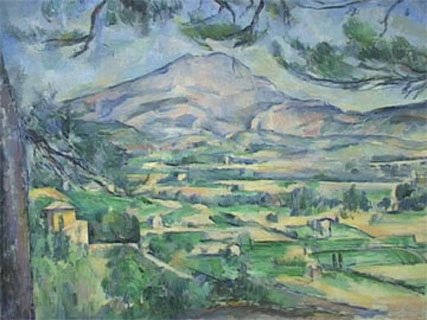Samuel Courtauld was a bold and perceptive collector, who dared to buy paintings by the likes of Renoir, Gauguin and Van Gogh at a time when their work was still being greeted with incomprehension or outright ridicule by most self-styled experts on art in Britain. It is thanks to him that the Courtauld Gallery owns the nation’s most impressive collection of paintings by Paul Cezanne (1839-1906), comprising some eighteen pictures altogether, including oils, watercolours and other works on paper. To mark the Courtauld Institute’s 75th anniversary, all have been brought together and put on display in a single gallery. Surprisingly, this is the first time that it has been done. The result is a small exhibition of tremendous energy and intensity, and one that suits its subject perfectly.
Cezanne’s works repay the kind of long, slow looking encouraged by a concentrated, focussed display of this kind. He was a deep and demanding artist, who constantly questioned himself and his own perceptions. He tested the boundary between appearance and reality, worked ceaselessly at the threshold where nature and human nature meet and merge – putting pictorial flesh on the bones of his one-time friend Emile Zola’s definition of a work of art as “a corner of reality seen through a temperament”. As a result, he substantially reinvented the language of representational painting and earned himself the sobriquet “father of modern art”.
Picasso, whose Cubist adventures owed much to Cezanne’s influence, once remarked that what he valued most in the older painter was “his anxiety”. Clues to what he might have meant by that are furnished by a painting that hangs at the heart of the Courtauld’s exibition. One of Cezanne’s most brilliant and daring canvases, it is entitled The Montagne Sainte-Victoire with Large Pine Tree and was painted in...


